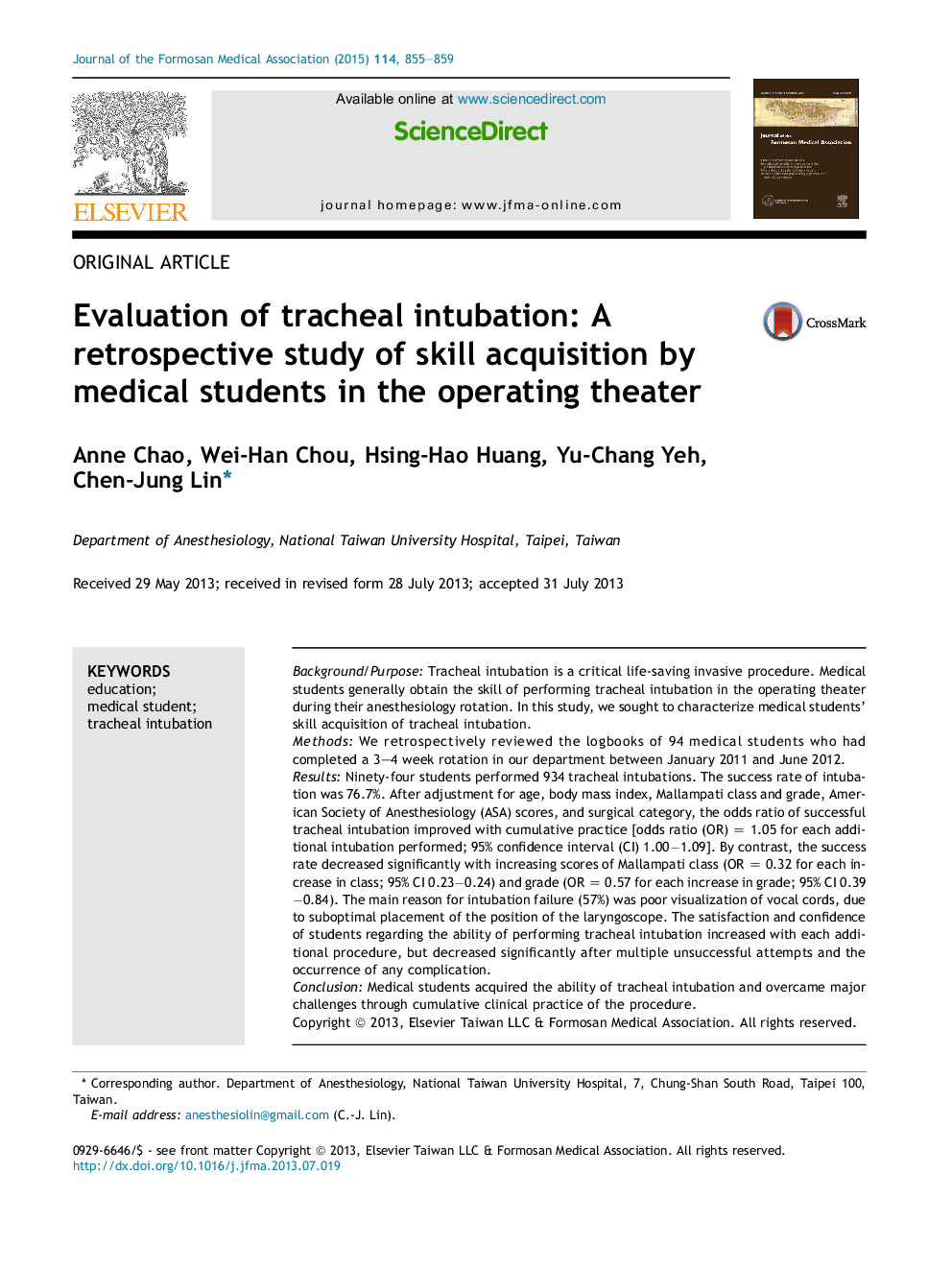| Article ID | Journal | Published Year | Pages | File Type |
|---|---|---|---|---|
| 3478450 | Journal of the Formosan Medical Association | 2015 | 5 Pages |
Background/PurposeTracheal intubation is a critical life-saving invasive procedure. Medical students generally obtain the skill of performing tracheal intubation in the operating theater during their anesthesiology rotation. In this study, we sought to characterize medical students' skill acquisition of tracheal intubation.MethodsWe retrospectively reviewed the logbooks of 94 medical students who had completed a 3–4 week rotation in our department between January 2011 and June 2012.ResultsNinety-four students performed 934 tracheal intubations. The success rate of intubation was 76.7%. After adjustment for age, body mass index, Mallampati class and grade, American Society of Anesthesiology (ASA) scores, and surgical category, the odds ratio of successful tracheal intubation improved with cumulative practice [odds ratio (OR) = 1.05 for each additional intubation performed; 95% confidence interval (CI) 1.00−1.09]. By contrast, the success rate decreased significantly with increasing scores of Mallampati class (OR = 0.32 for each increase in class; 95% CI 0.23−0.24) and grade (OR = 0.57 for each increase in grade; 95% CI 0.39−0.84). The main reason for intubation failure (57%) was poor visualization of vocal cords, due to suboptimal placement of the position of the laryngoscope. The satisfaction and confidence of students regarding the ability of performing tracheal intubation increased with each additional procedure, but decreased significantly after multiple unsuccessful attempts and the occurrence of any complication.ConclusionMedical students acquired the ability of tracheal intubation and overcame major challenges through cumulative clinical practice of the procedure.
